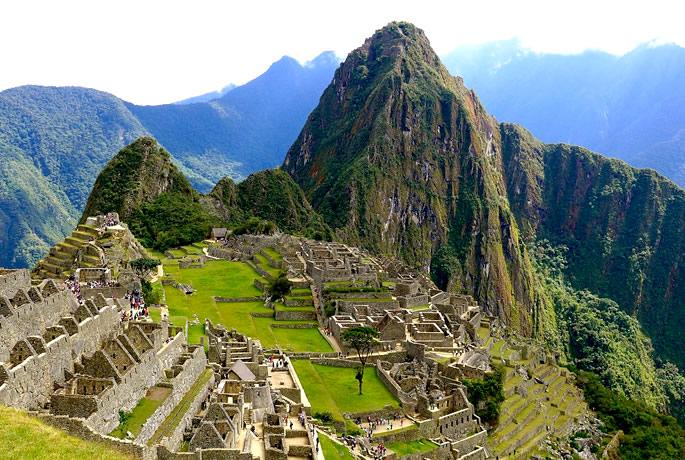
Of course you know it’s one of the Seven Wonders of the World. You probably also know it was likely a sacred religious site for the Inca leaders of Peru and that it lay hidden to the outside world until the American archaeologist Hiram Bingham stumbled upon it in 1911. Here are some interesting facts you may not have known about Machu Picchu
- The westerner credited with unveiling Machu Picchu to the outside world was Hiram Bingham, an Iniana-Jones type law professor from Yale. He was led to the site by a local boy and was stunned by the beauty and grandeur of the abandoned site.
- It was never supposed to be discovered. The Incas worried (for good reason) that the Spanish would discover and loot Machu PIcchu. To prevent this from happening, the Incas abandoned it, burning the forest on the way out so the re-growth would hide the trails up the mountains. The plan worked. It was never discovered by the Spanish and was hidden until Bingham visited it.
- Bingham was really looking for Vilcabamba the ‘Lost City of the Incas’ when he was first led up the slopes to the overgrown ruins. It was proven that the real lost city of the Incas was Espiritu Pampa, west of Machu Picchu.
- According to a group of archaeologists, Machu Picchu was built in 1532 as a retreat for the royal family. The Inca ruler who built it may have envisioned the city as a peaceful place to get away from the hustle and bustle of ‘the city’ – Cusco.
- Incredibly, the stones of Machu Picchu were carried to the site by hand (the Incas never discovered the wheel). The quality of the stone masonry is legendary. The Incas cut each stone by hand and wedged them together so closely that the blade of a knife could not be inserted between them.
- There’s a lot you can’t see at Machu Picchu – as much as 60% of it. The Incas constructed a network of foundation walls and and drainage systems that wind beneath the citadel.
- The big mountain you see is not Machu Pichhu. It’s Huayna Picchu, “young peak”. You can climb this peak but only 400 people are allowed up per day, split in two time slots. Our guide will tell us more about the hiking trail options. For those who want to take on this climb, our group will have a permit to do so.
- The best time to visit is early in the morning. If you arrive before 7am, you will beat the crowds. However, you may be walking in the clouds until the sun comes out. The hours of 12:00-3:00 are peak hours. We will spend the first day at Machu Picchu with a guide who will take us on a tour detailing the history and background of the site. We are then staying on the next day for a return unguided visit. There are many hiking trails to choose from at all levels.
- We still don’t know, without a shadow of a doubt, what Machu Picchu really was. Bingham theorized that it was the last fortress of the Incas. The results showed that remains found on the premises were mostly female, leading experts to believe these could be ‘Sacred Virgins of the Sun’. Later, this was refuted as skeletons were exhumed, re-examined and found to be 50% male/50% female. Most agree it was some sort of citadel built for a ruler. Others suggest that it is nearly impossible to understand Machu PIcchu as a separate entity and that by connecting it with other sections of the Inca Trail, this could have been some form of a pilgrimage.
- You can get a Machu Picchu stamp on your passport!
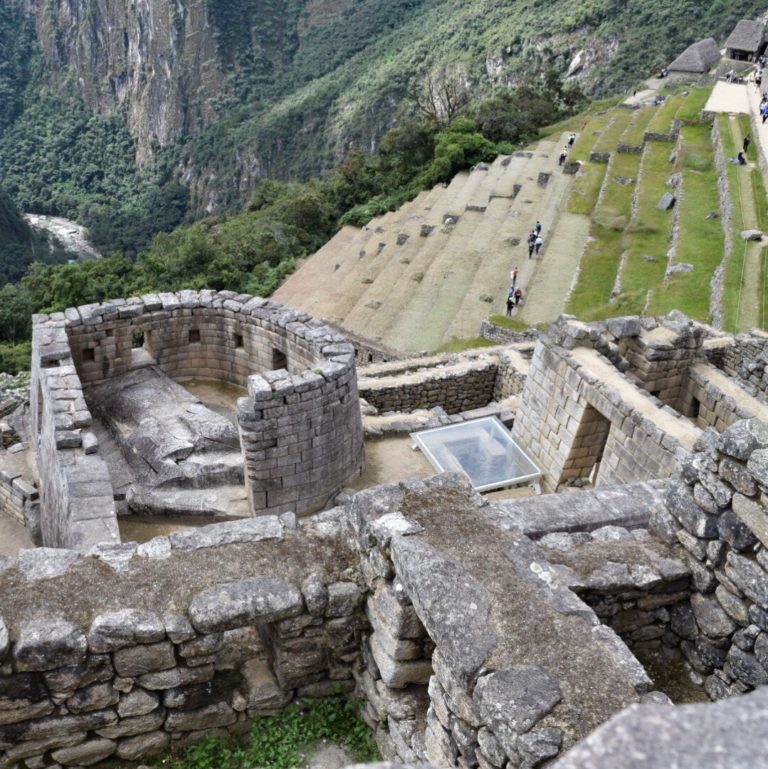
The Temple of the Sun, Machu Picchu
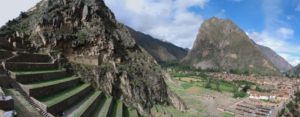 Ollantaytambo Ruins
Ollantaytambo Ruins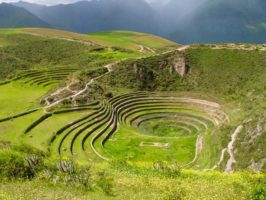 Moray Agricultural Terraces
Moray Agricultural Terraces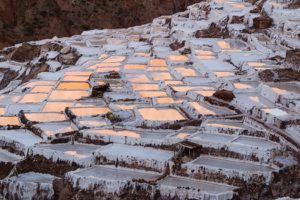 Salt Pans of Maras
Salt Pans of Maras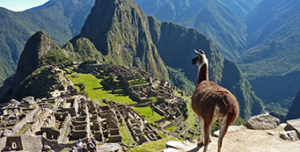 Machu Picchu
Machu Picchu Peru has one of the most exciting culinary scenes in the world. Often referred to as ‘Fusion Cuisine’, it draws from Spanish, French, Italian, Asian, Arab and African cuisine to combine with local meats, produce, grains and seafood. Peru’s culinary world also incorporates the foods and traditional preparations from the three major regions of Peru – the Andes, the Amazon and the coast.
Peru has one of the most exciting culinary scenes in the world. Often referred to as ‘Fusion Cuisine’, it draws from Spanish, French, Italian, Asian, Arab and African cuisine to combine with local meats, produce, grains and seafood. Peru’s culinary world also incorporates the foods and traditional preparations from the three major regions of Peru – the Andes, the Amazon and the coast. Lima, in particular, has experienced a gastronomic explosion. It was named the world’s leading culinary destination by the World of Travel Awards. Lima has emerged as South America’s food capital for creative, delicious, fusion-inspired dishes.
Lima, in particular, has experienced a gastronomic explosion. It was named the world’s leading culinary destination by the World of Travel Awards. Lima has emerged as South America’s food capital for creative, delicious, fusion-inspired dishes.  We can’t think of a better way to experience Lima than through its exceptional fusion cuisine!
We can’t think of a better way to experience Lima than through its exceptional fusion cuisine!